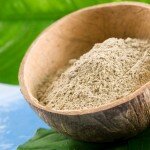Skin cancer rates continue to increase, including with conventional sunscreen use… where chemical content and effects are questionable. The question of sun and safety continues with “what’s the best sunscreen”? Before ignoring natural sun protectors that included olive oil or coconut oil, let’s consider what test results are showing.
 In 2009, the University Institute of Pharmacy in Raipu, India, published an Abstract study on evaluating ultraviolet absorption ability of certain natural oils used in sunscreens or cosmetics and their SPF (sun protective factor) values.
In 2009, the University Institute of Pharmacy in Raipu, India, published an Abstract study on evaluating ultraviolet absorption ability of certain natural oils used in sunscreens or cosmetics and their SPF (sun protective factor) values.
To summarize, olive oil and coconut oil were found have the highest SPF value at around 8, castor oil around 6; almond oil around 5; mustard oil and chaulmoogra oil both around 3; and sesame oil at SPF 2. Studies may vary on their SPF values but these oils are consistently tested to have sun-protective properties. Studies are also indicating good protection is about more than a high SPF figure.
Oily bases like olive and coconut oil were more effective for producing a long-lasting film of sunscreen on the skin. Their emollient properties protected skin against the drying effects of wind and sun exposure. Natural-base sunscreen lotions that included the oils of almond, avocado, coconut, olive, peanut or sesame were reported to have UV filters. Addition of Red Raspberry Seed Oil is noted to have high SPF properties in the mid-20 range.
Increasing the SPF value
Mineral compounds commonly added to natural or organic sunscreens include zinc oxide and titanium dioxide, due to their highly reflective properties. With the controversy over safety of nanoparticles or micronized particles, the safer choice appears to be the liquid or cream base zinc particles that are non-micronized. Until 2010, it was thought there was no absorption of zinc oxide or titanium through the skin. These are, however, healthier additives used to increase sun protection than synthetic chemicals have proven to be.
Zinc oxide blocks different types of light rays for broad protective qualities. While recent studies show there is some absorption of zinc and titanium through the skin, the amount is very small. The professor who initiated this study said he was happy to continue applying it on his grandchildren as a sunscreen product, endorsing the small amount absorbed as safe compared to chemical risk.
Essential oils, as mentioned elsewhere, are more than a pretty smell! They all have anti-inflammatory effects, preservative effects due to the anti-bacterial, anti-fungal or anti-oxidant properties and uplifting psychological effects.
Among essential oils (E.O.) tested for SPF ratings, the highest SPF was found in peppermint and basil – both rating around 7, and lavender E.O. near 6. The more gentle lavender is also renowned for speedy help to ease burns and prevent burn blisters. Essential oils are not true oils. They are the essence of a tree, herb or flower they are sourced from. Blending by drop into a base oil, like coconut, is important. The main question associated with them is how they were manufactured, which is why there are various qualities available.
Aloe vera is in many natural sunscreens for its beneficial anti-inflammatory and healing properties, but does not test as having high SPF properties. Its antioxidant components, however, enhance any sunscreen’s protective qualities.
We may intend to make our own sunblock every summer with a mix of natural ingredients for their combined properties, but the more readily available retail version is often what’s in our cabinet. Reading the ingredient list gives confidence in a healthy sunscreen for that vital playtime in the sun.
Sunscreen is not generally recommended for infants under 6 months, mainly because it’s not proven to be harmless for sensitive baby systems. Wise parents use baby hats with brim coverage and sun umbrellas for shade when clothing exposes arms or legs to direct sunlight.
To read the full report on the study from Pharmacognosy Res. 2010 Jan-Feb; 2(1):22-25, visit: www.ncbi.nlm.nih.gov/pmc/articles/PMC3140123/
For those experiencing skin cancer, either first time or repeatedly, investigating the success reported with medicinal use of cannabis (hash) oil may provide encouraging options. Lloyd Robertson, Canada’s longest serving national news anchor conducted an interview on cannabis oil effectiveness for melanoma a few years ago. Some USA states, like Colorado, have legalized it’s use, others like Maine and California, have decriminalized its use for medical purposes. Medicinal cannabis oil is made from the plant buds. Three months of small dose usage is said to destroy leukemia and cancer cells, along with helping various other severe conditions, including neurological impairment – as with Alzheimer’s, Parkinson’s disease and dementia. And then there’s hemp oil, reputed to have the same medicinal results. Hemp is a variety of cannabis plant with low THC content, which is the psychoactive element in cannabis. The 1930′s term ‘medical marijuana’, however, continues to oppose widespread legalized acceptance. You could start your own research at the links below:
http://www.cureyourowncancer.org/testimonials.html
http://www.medicaljane.com/2013/01/26/rick-simpsons-hemp-oil-medicine-natural-cure-for-cancer-using-concentrated-cannabis-oil/
http://patients4medicalmarijuana.wordpress.com/medical-use-of-cannabis-video/the-government-holds-a-patent-for-medical-marijuana/


 Click To Buy
Click To Buy